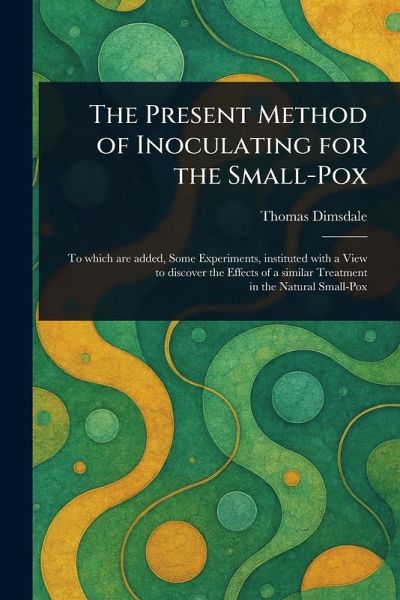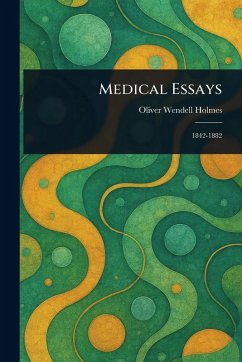
The Present Method of Inoculating for the Small-Pox
Versandkostenfrei!
Versandfertig in über 4 Wochen
17,99 €
inkl. MwSt.
Weitere Ausgaben:

PAYBACK Punkte
9 °P sammeln!
Delve into the history of medicine with Thomas Dimsdale's "The Present Method of Inoculating for the Small-Pox." This meticulously prepared reprint offers a fascinating glimpse into 18th-century public health practices and the early fight against smallpox. Dimsdale, a prominent figure in early medicine, details the methods of inoculation prevalent at the time, accompanied by accounts of experiments designed to understand the effects of similar treatments on naturally occurring smallpox. A crucial historical document for anyone interested in the development of vaccination, this work sheds light...
Delve into the history of medicine with Thomas Dimsdale's "The Present Method of Inoculating for the Small-Pox." This meticulously prepared reprint offers a fascinating glimpse into 18th-century public health practices and the early fight against smallpox. Dimsdale, a prominent figure in early medicine, details the methods of inoculation prevalent at the time, accompanied by accounts of experiments designed to understand the effects of similar treatments on naturally occurring smallpox. A crucial historical document for anyone interested in the development of vaccination, this work sheds light on the challenges and innovations of early medical practitioners. Discover the roots of modern public health as Dimsdale explores the critical work being done in a time before widespread vaccination. This book provides invaluable insight into the history of Europe, early medicine, and the ongoing battle against infectious diseases. This work has been selected by scholars as being culturally important, and is part of the knowledge base of civilization as we know it. This work is in the public domain in the United States of America, and possibly other nations. Within the United States, you may freely copy and distribute this work, as no entity (individual or corporate) has a copyright on the body of the work. Scholars believe, and we concur, that this work is important enough to be preserved, reproduced, and made generally available to the public. We appreciate your support of the preservation process, and thank you for being an important part of keeping this knowledge alive and relevant.














